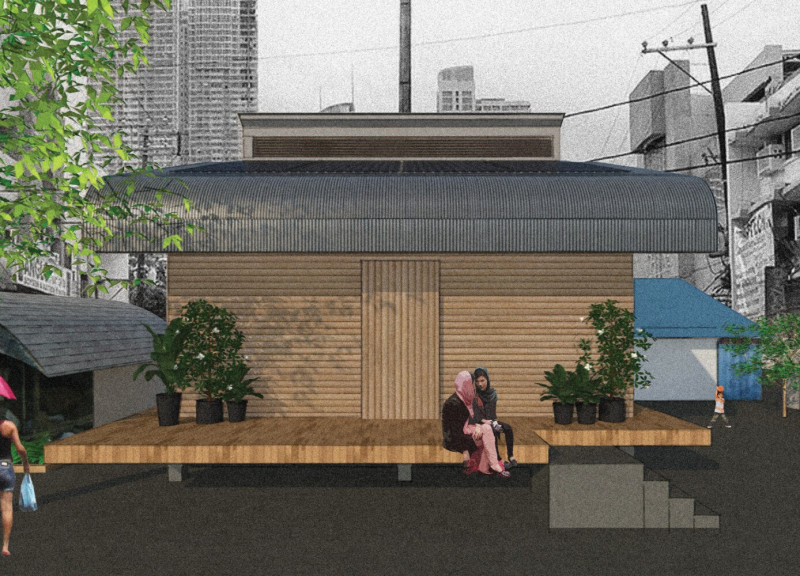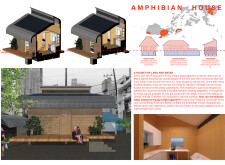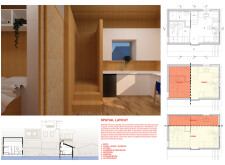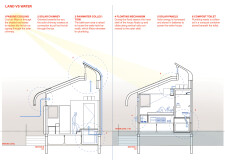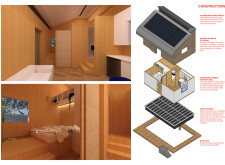5 key facts about this project
### Project Overview
The Amphibian House is designed to address the frequent flooding experienced during seasonal typhoons in the Philippines, particularly in urban environments such as Metro Manila. The project embodies a hybrid approach that respects the dynamic relationship between land and water. Drawing on traditional Filipino architectural elements, particularly the Bahay Kubo and Bahay na Bato, the design integrates contemporary sustainable technologies to mitigate the impacts of urban flooding.
### Spatial Configuration and Community Integration
The layout of the Amphibian House is carefully organized to differentiate between public and private spaces. Upon entry, visitors are greeted with a layout that effectively separates private areas, including bedrooms and bathrooms, from public zones such as the living, dining, and kitchen areas. This configuration promotes fluidity and interaction within the communal spaces while ensuring privacy in the more personal sections of the home. The design prioritizes circulation efficiency and functionality, accommodating a range of living activities within a compact footprint.
### Material Innovations and Sustainable Practices
Innovative material choices reflect both cultural significance and functional performance. Engineered bamboo is employed for the interior shell, offering flexibility during flood events, while bamboo exterior cladding enhances durability and aesthetic warmth. Aluminum roofing panels contribute to the structure’s buoyancy and resistance to corrosion. A floating mechanism incorporates plastic dock floaters, allowing for effective elevation above floodwaters. Sustainability is further supported through a compost toilet system that minimizes environmental impact and a rainwater collection system that utilizes the abundant local resources. Additionally, passive cooling strategies, such as shaded eaves and a solar chimney, enhance energy efficiency, ensuring comfort while reducing reliance on non-renewable energy sources through strategically placed solar panels.


